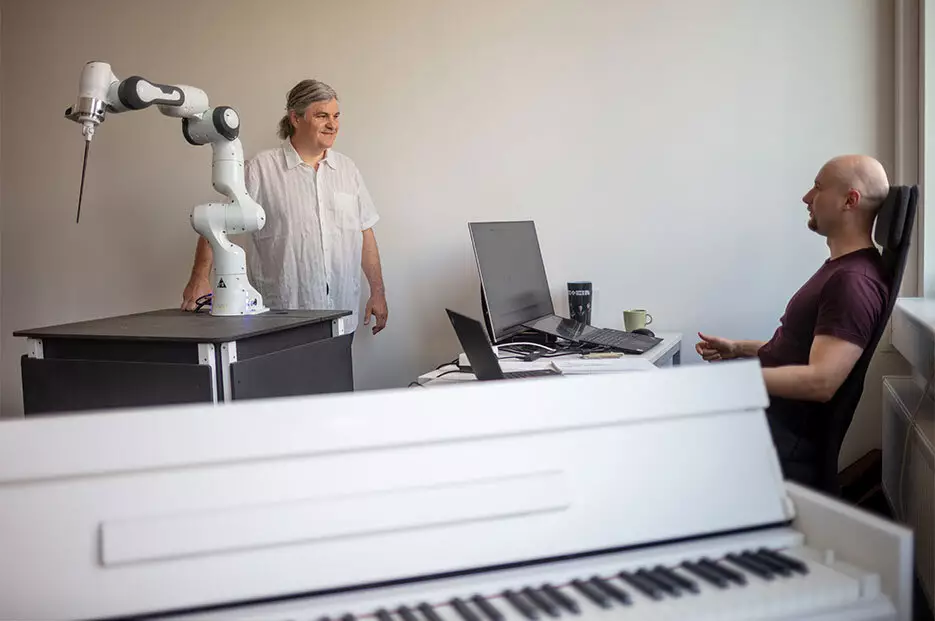In an unprecedented fusion of robotics and artistic expression, the city of Dresden, Germany, recently witnessed the debut of a three-armed robot designed to emulate the nuances of a human orchestra conductor. This innovative device, equipped with arm-like appendages reminiscent of futuristic light sabers, directed live performances by the Dresdner Sinfoniker orchestra, marking a significant milestone in the ongoing exploration of artificial intelligence in creative fields.
The robot’s design allows for differentiated movements of each of its three arms, enabling it to engage with various sections of the orchestra autonomously. This capability was dramatically showcased during the performance of “Semiconductor’s Masterpiece”, a piece especially composed for the robot by Andreas Gundlach. The orchestral arrangement benefited from the robot’s unique conducting style, allowing for a level of precision and coordination that, according to musicians, could surpass what is achievable by a single human conductor.
The Inspirations Behind Robotic Conducting
Gundlach shared that the conception of the robotic conductor was inspired by the collaborative robots, or “cobots”, developed by scientists at Dresden’s Technical University. Unlike machines intended to replace human labor, these cobots are designed to enhance human capabilities and work in tandem with people. This philosophy underpinned the two-year development process of the robot, a venture that has fostered discussions about the potential roles of technology in artistic settings.
Moreover, Gundlach poignantly reflected on the challenges of teaching the robot to perform conductor movements. He noted that the experience reinforced the understanding of human creativity’s complexities. The seemingly simple task of gesturing—conveying rhythm, dynamics, and emotion through mere arm movements—proved to be an intricate endeavor for the robotics team. The creators aimed for the robot’s aesthetic expressions to resonate with the orchestra, an endeavor that required a level of patience and detail-oriented work.
The Impact of Robotic Innovation on Performance Art
The implications of a robotic conductor extend beyond just the novelty of the performance. It prompts ongoing discussions about the broader integration of artificial intelligence in the arts, raising questions concerning the future of musical direction and the unique contributions of human conductors. In addition, with the premiere of “#kreuzknoten” by Wieland Reissmann, a composition characterized by musicians performing at differing tempos, the robot’s adaptability further illustrated its potential to handle complex orchestration unlike ever before.
It is essential to contemplate whether the emergence of such advanced technology might enrich or dilute the art of conducting. As robots take on roles traditionally reserved for humans, they compel us to redefine our understanding of artistic leadership and collaboration. This pioneering experiment not only highlights the capabilities of robots but also emphasizes the enduring beauty of human creativity and the intricate nature of collaborative performance.
The debut of a robotic conductor in Dresden sparks a dialogue between technology and art that is both provocative and inspiring, inviting future exploration into additional innovations in creative expression.


Leave a Reply